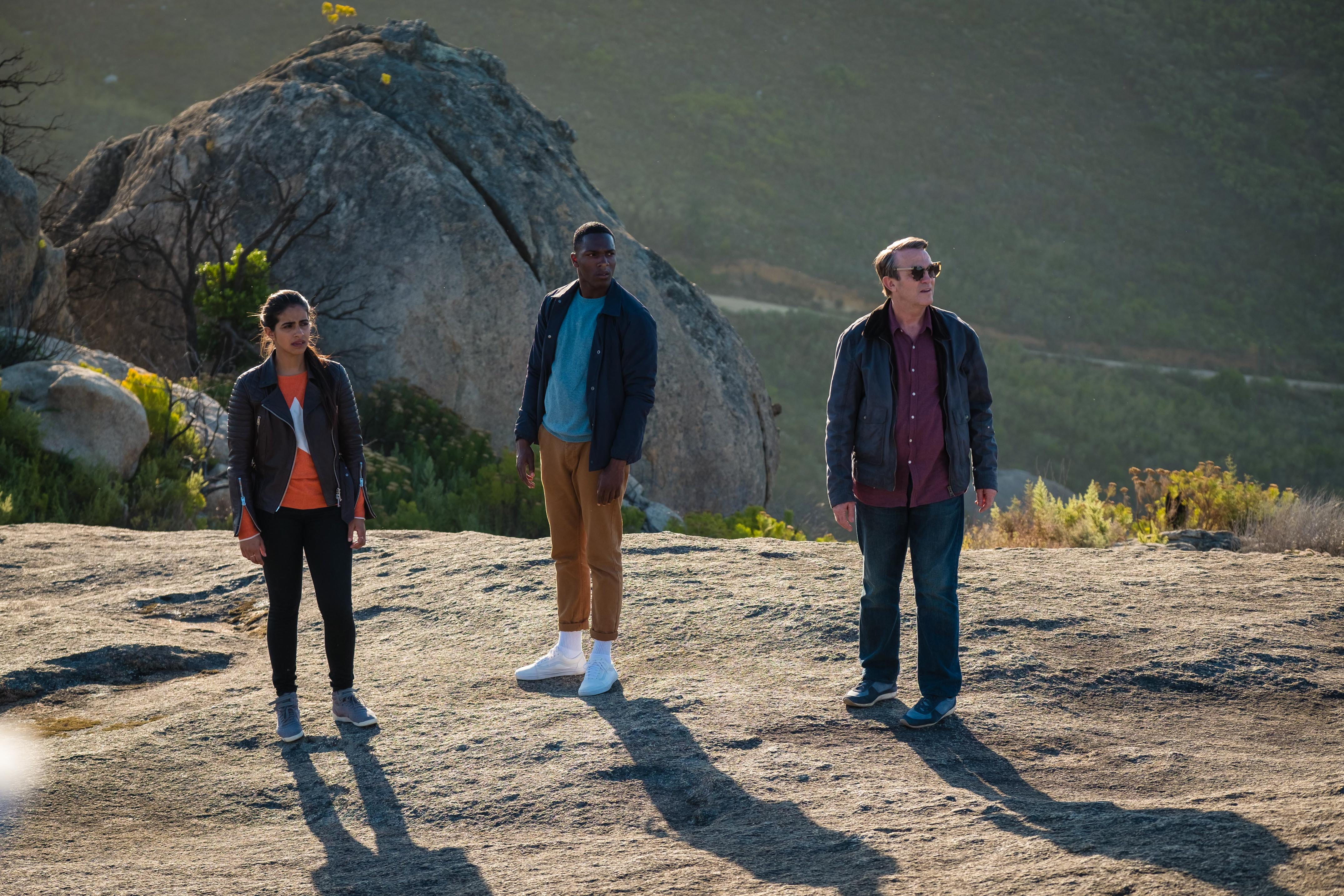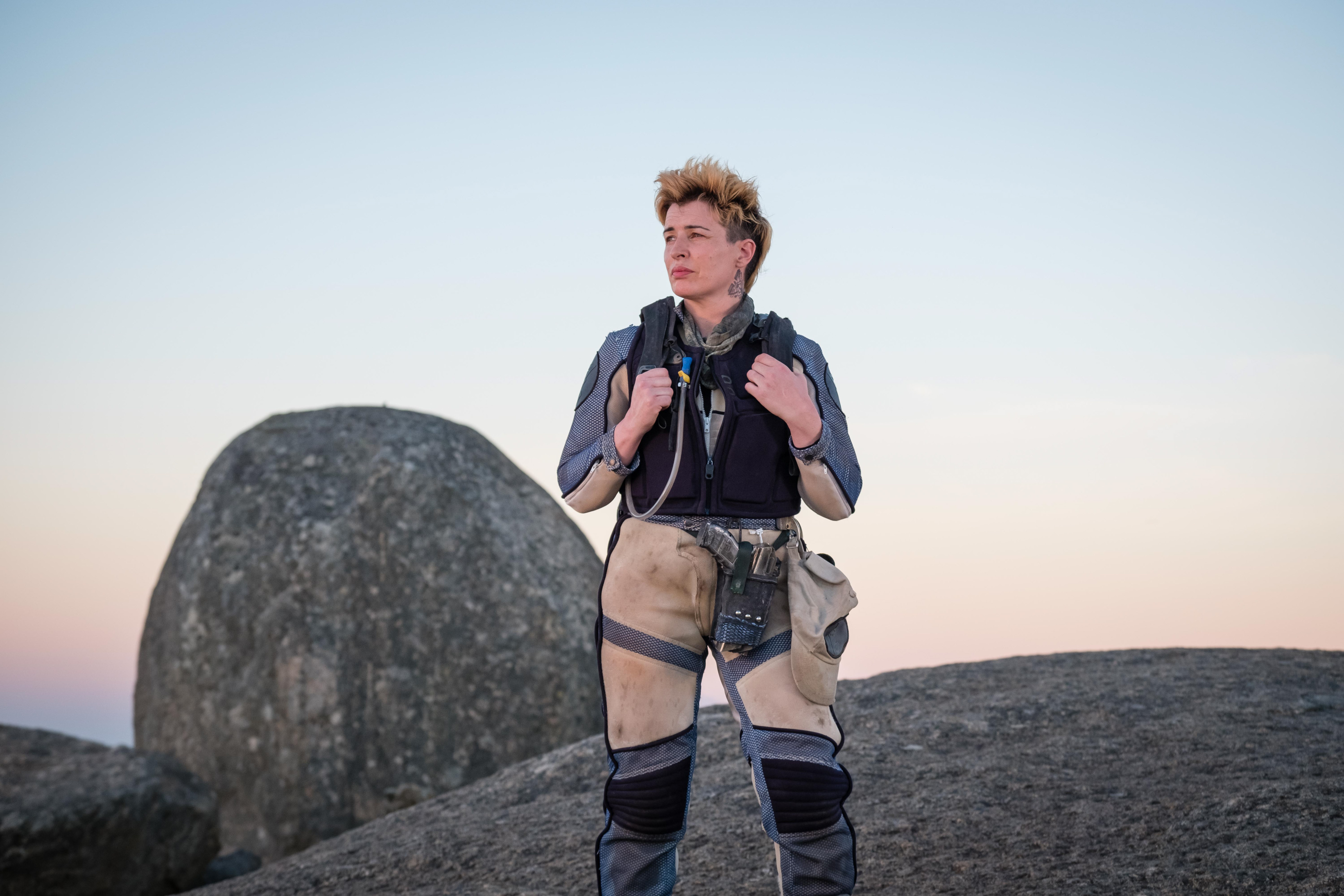Doctor Who series 11: The Ghost Monument review
The Ghost Monument screams confidence and looks gorgeous while taking the show in a bold, new direction. Spoilers ahead in our review...
This review contains spoilers. Our spoiler-free review is here.
11.2 The Ghost Monument
After The Woman Who Fell To Earth aired last week, fans were left with some lingering questions. Chief among them: what would the new opening look like (assuming the show wasn’t going the way of so many modern TV series and doing away with a proper title sequence altogether), and how long would it be before we got to see the TARDIS? Despite Chris Chibnall’s best efforts to sow seeds of doubt in interviews that the Doctor’s trusty ship may never return, we get satisfying answers to both questions in this week’s episode, The Ghost Monument.
So, what of that opening sequence? Since the show’s revival in 2005, it’s always been fairly clear what we’ve been looking at: starfields and time vortices, maybe with the odd planet thrown in for good measure. These new visuals harken back to the more abstract days of the 1960s and 70s, with an aesthetic that means you’re never quite sure what you’re looking at. It’s unsettling, and deliberately so. Combined with Segun Akinola’s new rendition of the theme tune, the opening becomes a real statement of intent to return to the series’ roots.
It is perhaps fitting, then, that The Ghost Monument bears some similarities with one of Doctor Who‘s earliest stories, 1964’s Marco Polo. Both are visually sumptuous stories (Though Polo sadly no longer exists in the archives) which see the Doctor and their three friends unable to use the TARDIS and having to cross a harsh desert landscape with a small cast of guest characters seeking riches. And although The Ghost Monument runs for just under fifty minutes as opposed to Marco Polo’s seven weeks, the end result is the same: a slower tale which allows for greater characterisation and gives the Sheffield Squad some bonding time.
Because let’s get the biggest negative out of the way first: for the second week running, this episode is not exactly the most complex of Doctor Who stories. Plotwise it’s a fairly straightforward journey from A to B, with a few alien nasties thrown in along the way. It’s also a very predictable tale; the nature of the titular monument, Chekhov’s cigar and the joint first placing could all be seen a mile off.
However, to dismiss The Ghost Monument based on its plot alone would be to ignore much of what makes the episode enjoyable. After all, we get to spend the episode getting to know the Time Team a little better and starting to explore the bonds between them. Easily the most interesting of these – and perhaps not coincidentally the one with the most screen time devoted to it – is Graham and Ryan. With Grace’s death in the previous episode still raw, there’s a very real and natural awkwardness between the two of them, which isn’t like anything we’ve seen in Doctor Who before.
This awkwardness also brings out one of the more interesting character beats in the episode, when Ryan berates Graham for talking about his feelings and Graham retorts that Ryan doesn’t talk about his enough. This, combined with the scene in which Ryan takes out his anger on some robot guards, would seem to suggest the Doctor Who is taking on the issue of toxic masculinity in young men. The word ‘timely’ has been used in some of the publicity for this series, and it doesn’t get much more timely than this – especially given the numbers of boys and young men who watch the show. It’s to Tosin Cole’s credit that the character remains both believable and sympathetic, and at the moment his is easily the most intriguing character arc on the show.
Though they both get some nice moments, particularly in their interactions with the guest cast, Yas and Graham don’t fare nearly as well as Ryan in their development. Bradley Walsh and Mandip Gill are never less than watchable, but it appears that Graham’s role on the team at this point is to be confused and annoyed by a lot of what he sees, which does become grating after a while. With luck, now that the TARDIS is back and Graham is no longer an accidental traveller, the interjections will become a lot more constructive.

And Yasmin… Was also in the episode. One can only hope there’s some really juicy stuff in the pipeline for Mandip Gill to get her teeth into, because at the moment Yaz seems to have graduated from Generic Companion 101 – she’s sympathetic, supportive and brave, but beyond that there’s disappointingly little we can say about her. Actions speak louder than words, and whilst it was good to hear Yaz mention her family, it’s not character development.
However, in spite of these issues, I found myself grinning my way through much of the story for a number of reasons. Firstly, it looks utterly gorgeous. This episode (along with next week’s) was filmed in South Africa, and director Mark Tonderai milks this for all it’s worth, with sweeping desert sandscapes and stunning vistas. There have been many complaints about the reduction to ten episodes this year (plus the seasonal special, which may not air until 2019 if recent reports are to be believed), but if that’s what it takes for the show to look this good then it’s a welcome change.
While the generic robot guards are just that, the other monsters in the episode proved to be rather more effective. Although it’s clear Chris Chibnall has watched too much Aladdin, these flying carpets are just creepy, and have that classic Doctor Who monster quality of being easy to replicate – I’d like to think there’ll be children running after their siblings with their beach towels in hand after this one.
The roving rugs also allow for the setup of what will almost certainly be series arcs – not only were they created at the behest of the Stenza, but there’s also something in the Doctor’s head about a “timeless child” that will surely prove significant. Given what the crew have said about the lack of serialisation this year it’s likely this won’t be picked up on in any serious way for a good few weeks, but it’s a satisfying breadcrumb.
By way of a series preview, the transmitted version of last week’s episode contained an extended roll-call of guest actors that was at best a bit weird and awkward and at worst bafflingly self-important. But it’s hard to deny the value that Shaun Dooley and Susan Lynch bring to The Ghost Monument, with Dooley clearly having fun as lovable scumbag Epzo, and Lynch turning in a gutsy, earnest performance as Angstrom. Their roles don’t really develop over the course of the story – if it weren’t for the Doctor telling them to finish joint first they’d still be trying to screw each other out of the prize – but they add colour to the episode. Rounding off the guest cast is Art Malik, who is disappointingly under-used but infuses his brief appearances in the episode with a potent mix of charm, menace and apathy. It wouldn’t be the worst thing in the world if he were to return.

Running excitedly through the centre of this madness is Jodie Whittaker, with a madcap physicality not unlike – though a little more restrained than – Matt Smith. Now that we’ve done away with the post-regenerative nonsense of last week, Whittaker’s manic energy is channeled into a more considered performance, brimming with a quiet intensity. Some of her best moments this week are fuelled by righteous indignation, both at Ryan for his shooting spree and at Epzo for being Epzo. And show me a long-term fan who didn’t let out a cheer when she pulled out some Venusian aikido…
Also like Matt Smith’s Doctor, this incarnation’s vulnerabilities seem to be on display more than with most past incarnations. This is largely endearing, such as when she thanks her companions for not going on about the fact things have gone wrong, but is a little jarring near the close of the episode when, seeing that the TARDIS hasn’t arrived yet, the Doctor flat-out gives up.
Part of the reason this is so disconcerting is that we haven’t been given enough information to view this as a defeat – we know the TARDIS appears every 1,000 cycles, but we don’t know when it’s due or for how long. It’s a moment that is designed to emphasise the value of the Doctor’s new friends as they tell her not to give up, but arguably it does so at the Doctor’s expense. Though the show is (rightly) making no fuss about the Doctor’s gender, you have to wonder whether seemingly making this incarnation that bit more vulnerable than the previous ones is a bit of a misstep.
The moment of despair is, of course, designed to set up the triumphant scenes that follow, as the Doctor is finally reunited with the love of her lives. It’s such a joyous occasion, and seeing Jodie Whittaker with the TARDIS really hammers home just how much she’s the Doctor now. When she tells Yaz to “start believing”, I got goosebumps – helped by the swells of Segun Akinola’s score, which with its reliance on strings and brass carries a particular warmth to it.
As for the TARDIS’s latest desktop theme… It may take some getting used to. In some ways it’s reminiscent of the 2005 edition, with the admittedly very pretty crystal struts holding up the structure like some kind of Fortress of Solitude. However, like that version of the TARDIS it’s currently quite dimly lit and incredibly gloomy – bar the console area, which when surrounded by the crystal growths feels quite small and claustrophobic. Also, the Doctor seems to have acquired one of those cheap crystal-etched TARDISes you constantly see advertised on Facebook…
For all its flaws, The Ghost Monument screams ‘confidence’. This is a show heading in a bold new direction with its best foot forward, and it’s not afraid to take risks. Nothing exemplifies that more than the trailer for next week’s episode. It’s going to be a long seven-day wait…
Read Pete’s review of the previous episode, The Woman Who Fell To Earth, here.
